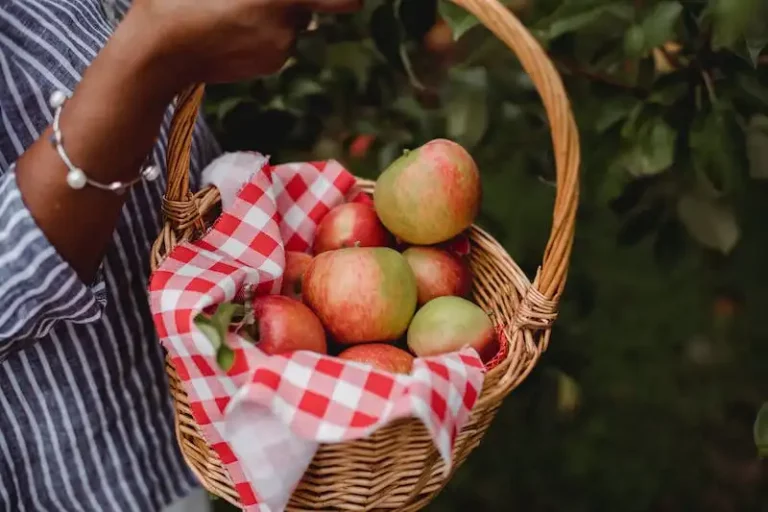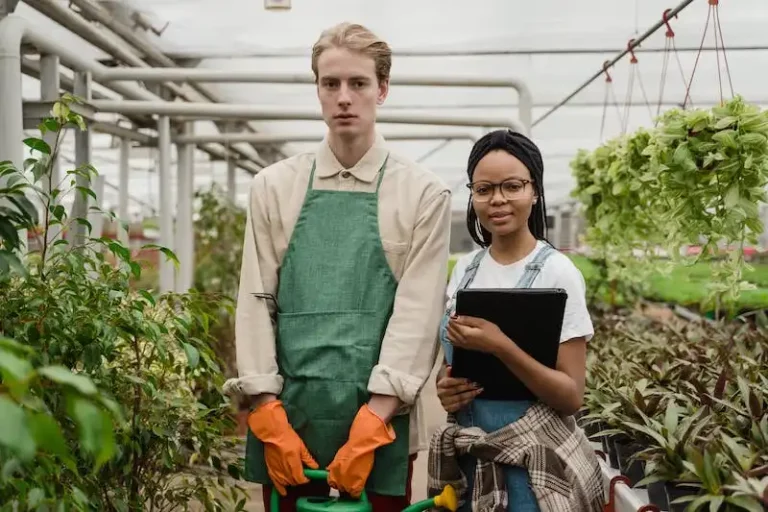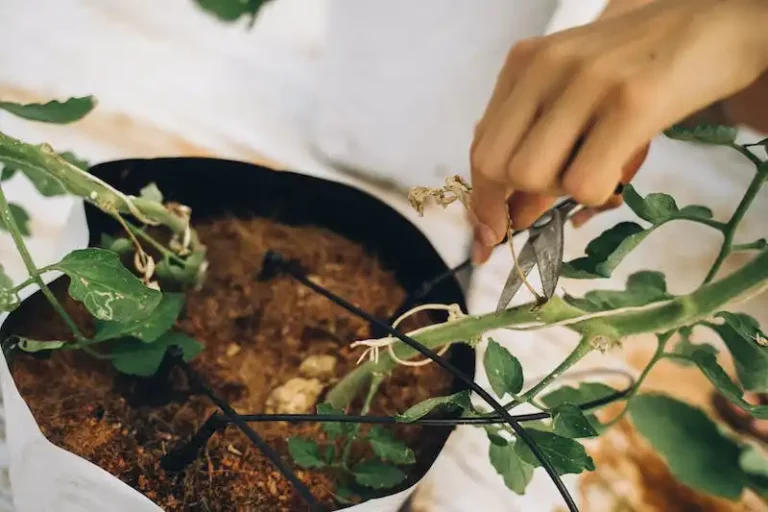Garlic is a popular vegetable that can be grown easily in most gardens. With its strong flavor and smell, it is a staple in many dishes and cuisines. Growing garlic is a rewarding process that requires a sunny location and well-drained soil.
In general, garlic is grown from cloves, which are the individual segments of the garlic bulb. Each clove has the potential to grow into a full-size garlic bulb, so it is important to choose large, healthy cloves for planting.
Garlic should be planted in the fall, between September and December, depending on your location. The timing may vary, but generally, garlic needs to be planted before the first frost. In regions with mild winters, garlic can also be planted in early spring, around March.
Before planting, prepare the soil by removing any weeds and adding organic matter. Garlic prefers a loose, well-drained soil, so consider adding compost or well-rotted manure to improve the soil structure.
To plant garlic, break the bulbs into individual cloves, making sure to keep the papery skin intact. Plant the cloves with the pointed end facing up, about 2 inches deep and 4-6 inches apart in rows. If you’re planting multiple rows, leave at least 12 inches of space between the rows.
After planting, cover the cloves with soil and apply a layer of mulch on top. Mulching not only helps to retain moisture, but it also insulates the soil during cold winters. Good mulch options for garlic include straw, leaves, or grass clippings.
Garlic is generally a low-maintenance plant, but it can be susceptible to diseases and pests. One common problem is rust, which appears as yellow or white spots on the leaves. To prevent this, make sure to rotate your garlic crops and practice good garden hygiene.
Garlic is ready for harvesting when the tops begin to yellow and dry out. Depending on the variety, this can take anywhere from 90 to 150 days. To harvest, gently loosen the soil around the bulbs with a garden fork and lift them out of the ground. It’s important to handle the harvested garlic bulbs with care to avoid bruising or damaging them.
Once harvested, garlic needs to be cured before it can be stored. To do this, hang the harvested garlic in a well-ventilated area with good air circulation, away from direct sunlight. Allow the garlic to cure for about two weeks, until the outer skin becomes dry and papery.
Propagating garlic is an easy and rewarding process. Whether you’re an experienced gardener or just starting out, growing your own garlic can be a fun and satisfying experience. By following these steps and taking proper care of your plants, you can enjoy a bountiful harvest of delicious garlic.
How to Plant Grow and Harvest Garlic
Growing garlic is a rewarding and flavorful addition to any garden. Garlic is a hardy crop that can be easily planted, grown, and harvested with a few simple steps. Here’s a guide to help you get started:
Selecting the Garlic Varieties
Before you start planting garlic, it’s important to select the right variety. Garlic comes in two main types, softnecks and hardnecks. Softnecks are the most commonly grown varieties and are ideal for mild climates. Hardnecks, on the other hand, are best suited for colder regions.
You can buy garlic bulbs or cloves online or from a local horticultural store. When selecting bulbs, look for firm and healthy ones that are free from any signs of disease or damage. Choose the larger bulbs as they tend to produce larger cloves.
Preparing the Planting Site
Garlic needs a sunny spot with well-drained soil. Before planting, prepare the soil by removing any weeds or grass and breaking up large clumps. Adding organic matter such as compost or well-rotted manure will help improve the soil’s fertility and drainage.
Garlic can also be grown in containers or raised beds if you don’t have a suitable garden space. Just make sure the container or bed is at least 8 inches deep and filled with well-draining potting mix.
Planting Garlic
Garlic can be planted in both the spring and fall, but fall plantings generally produce larger and more flavorful bulbs. To plant garlic, separate the cloves from the bulbs, but keep the papery skin intact. Each clove will produce a new garlic plant.
Plant the cloves with the pointed end facing upwards and bury them about 2 inches deep in the soil. Space the cloves about 6 inches apart in rows that are at least 12 inches apart. Cover the cloves with soil and gently press it down to ensure good contact.
If you’re planting garlic indoors, you can use individual containers or trays. Fill the containers with potting mix and plant one clove in each container. Place the containers in a sunny spot indoors, and water them thoroughly.
Caring for Garlic
To help your garlic thrive, water it consistently but avoid overwatering, as garlic doesn’t like soggy soil. Stop irrigation a few weeks before harvesting to allow the bulbs to dry and mature.
Garlic plants are generally low-maintenance, but they can be affected by fungal diseases, including rust. To prevent infection, keep the planting area clean and free from debris. Providing good air circulation by spacing the plants properly and removing any yellow or damaged leaves can also help prevent disease.
If you live in a humid climate, you may need to be cautious of diseases, including white rot. Rotating your garlic plantings each year and avoiding overhead watering can help reduce the risk of diseases.
Harvesting Garlic
Garlic is typically ready to harvest when the lower leaves start to turn yellow and dry. Gently dig out the bulbs using a garden fork or shovel, taking care not to damage them. You can also test the readiness of garlic by digging up one bulb and checking for cloves that have formed and softness in the neck.
After harvesting, allow the garlic bulbs to cure in a warm and dry place for about 2-3 weeks. This will help them dry out and develop a papery skin. Once cured, remove the excess dirt and store the bulbs in a cool and dry place. This will keep them fresh and flavorful for several months.
Now that you’ve learned how to plant, grow, and harvest garlic, you can enjoy the delicious taste of homegrown garlic in your favorite recipes!
Timing Your Garlic Planting
Planting garlic at the right time is crucial for its successful growth. Just as with any other plant, timing is everything. When buying garlic bulbs for planting, it’s best to test a few bulbs to ensure their quality. Once the bulbs arrive, make sure to store them in well-ventilated containers to prevent mold or other forms of infection.
Timing your garlic planting depends on your specific location and climate. Garlic should be planted in the fall, before the ground freezes. The exact timing may vary depending on where you live, but a good rule of thumb is to plant garlic about 4-6 weeks before the ground freezes in your area.
Garlic cloves should be planted individually, about 2 inches deep and 6 inches apart. If you’re planting hardneck varieties, make sure to place the cloves with the pointed side up. Softneck varieties are less picky about their orientation, so you can plant them with either side facing up. Planting the cloves too shallow or too deep could affect their growth, so it’s important to get it right.
Garlic plants need well-drained soil and full sun to thrive. They require regular irrigation, especially during dry spells. Make sure to water the plants thoroughly, but avoid overwatering as it could lead to rot.
Before planting, prepare the soil by adding organic matter and ensuring the pH levels are appropriate for garlic growth. Garlic prefers slightly acidic soil, with a pH level between 6.0 and 7.0.
For growers in colder areas, it’s beneficial to mulch the garlic bed before winter arrives. This will help protect the bulbs from frost and will regulate soil temperature during the dormancy period.
During the growing season, watch out for the development of garlic scapes. These are the false flower stalks that may appear. It’s recommended to remove them as they can divert energy from the bulb formation. Additionally, scapes can be harvested and used in cooking to add a flavorful twist to dishes like sautéed greens or pesto.
Harvest time will typically be in early summer, around June or July, depending on when you planted your garlic. As the leaves begin to brown and wilt, it’s a sign that the bulbs are ready to be harvested. Dig up the bulbs carefully, without damaging them, and let them dry in a cool, dry, well-ventilated location.
The timing of your garlic planting can make a significant difference in the size and flavor of the bulbs. By understanding the best timing for planting garlic in your area and providing the necessary care and conditions, you can ensure a healthy and flavorful harvest.
Preparing Garlic Planting Beds
Before planting garlic, it’s crucial to prepare the planting beds properly. Here’s how:
- Cultivate the soil to a depth of 6 to 8 inches (15 to 20cm) in rows.
- Remove any weeds or grass from the area.
- Using a garden fork or spade, loosen the soil to create a well-drained bed for the garlic plants.
- If the soil is heavy, add organic matter such as compost or well-aged manure to improve drainage and fertility.
- Garlic prefers a pH level between 6 and 7; adjust the soil pH if necessary.
- Plant garlic cloves in rows, spacing them 4 to 6 inches (10 to 15cm) apart, with 12 to 18 inches (30 to 45cm) between rows.
- Ensure that the cloves are planted with the pointed end upwards and the root end facing downwards.
- Cover the cloves with soil, leaving about 1 to 2 inches (2.5 to 5cm) of soil above them.
- Mulch the garlic planting beds with straw or chopped leaves to help conserve moisture and suppress weeds.
- Keep the mulch layer at around 4 to 6 inches (10 to 15cm) thick.
By following these steps, gardeners can provide the ideal conditions for the garlic plants to thrive and grow. The mulch will also protect the young plants from cold temperatures and fluctuations in weather.



